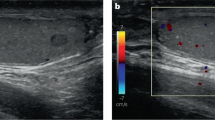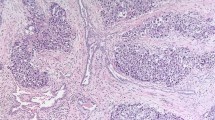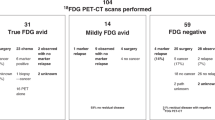Abstract
In patients with clinical stage I non-seminomatous testicular cancer only limited information is available about the administrative problems with the surveillance programme, in particular if this policy is to be implemented in a geographically extended country with limited computerised tomography (CT) resources. One hundred and two patients with non-seminomatous testicular cancer clinical stage I and low-risk histology (MRC criteria, UK) were followed by the surveillance policy for at least 1 year after orchiectomy (median 47 months, range 21-81 months). Twenty-two patients (22%) relapsed after a median time of 5 months (range 2-18 months), 14 of them in the retroperitoneal space. Serum alpha-fetoprotein and/or human chorionic gonadotrophin were elevated in eight of the 22 relapsing patients. The progression-free and cancer-corrected survival rates were 78% and 99% respectively. Patient non-compliance did not represent a major problem, whereas the regular and adequate performance of necessary CT examinations yielded some administrative difficulties. One and 3 years after orchiectomy about 50% of the relapse-free patients had no psychological problems and were satisfied with the surveillance programme, whereas 46% reported minor and 4% major psychological distress. Despite non-negligible administrative difficulties in geographically extended countries, surveillance is feasible and safe in compliant patients with low-risk non-seminomatous testicular cancer stage I. The responsible cancer centre and the local hospitals should establish a high degree of cooperation and enable adequate follow-up examinations in these patients.
This is a preview of subscription content, access via your institution
Access options
Subscribe to this journal
Receive 24 print issues and online access
$259.00 per year
only $10.79 per issue
Buy this article
- Purchase on SpringerLink
- Instant access to full article PDF
Prices may be subject to local taxes which are calculated during checkout
Similar content being viewed by others
Author information
Authors and Affiliations
Rights and permissions
About this article
Cite this article
Fosså, S., Jacobsen, A., Aass, N. et al. How safe is surveillance in patients with histologically low-risk non-seminomatous testicular cancer in a geographically extended country with limited computerised tomographic resources?. Br J Cancer 70, 1156–1160 (1994). https://doi.org/10.1038/bjc.1994.464
Issue Date:
DOI: https://doi.org/10.1038/bjc.1994.464



